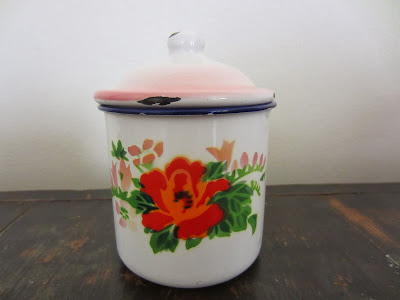a greek new year's eve is about getting together with family and friends, playing trianta ena (the card game 31) and cutting the vasilopita or basil pie at midnight..vasilopita is a type of yeasted bread or cake with a coin baked into it and tradition has it that the person finding the coin will be blessed for the rest of the year..
vasilopita is named after basil the fourth century bishop of caesarea in cappadocia in asia minor..the tradition of baking a coin into a loaf is said to be based on the coins st basil baked into sweetened bread as a way of distributing money to the poor..he's also recognised as having been the first person to establish a children's orphanage, a christian hospital and to have been one of the most wise and compassionate clergymen in the history of the church..his feast day is observed on january 1st at the beginning of the new year and the epiphany season..the orthodox church, in recognition of his contributions to the church and to humanity, combined the new year with the birth of christ and the epiphany, into the vasilopita observance..the vasilopita observance is the midnight tradition of cutting and distributing the bread among family and friends with a piece being set aside as a symbolic gesture toward the disadvantaged in recognition of st basil's work with the poor..
vasilopita is named after basil the fourth century bishop of caesarea in cappadocia in asia minor..the tradition of baking a coin into a loaf is said to be based on the coins st basil baked into sweetened bread as a way of distributing money to the poor..he's also recognised as having been the first person to establish a children's orphanage, a christian hospital and to have been one of the most wise and compassionate clergymen in the history of the church..his feast day is observed on january 1st at the beginning of the new year and the epiphany season..the orthodox church, in recognition of his contributions to the church and to humanity, combined the new year with the birth of christ and the epiphany, into the vasilopita observance..the vasilopita observance is the midnight tradition of cutting and distributing the bread among family and friends with a piece being set aside as a symbolic gesture toward the disadvantaged in recognition of st basil's work with the poor..
yeasted vasilopita recipe
adapted from 'flavours of greece' rosemary barron
makes 1 large loaf
enough for 20 people
enough for 20 people
ingredients sponge
225 gms tepid full cream organic unhomegenised milk
1 teaspoon yeast (tsp)
100 gms plain flour
ingredients dough
200-300 gms plain flour
300 gms wholemeal flour
1/2 tsp crushed mastic
1 1/2 tsp mahlepi
6 eggs
225 gms honey
140 gms castor sugar
125 gms butter melted and cooled
4 tablespoons light olive oil
1 tbs finely cut candied organic orange peel (i used homemade)
1 tbs finely cut candied organic lemon peel (i used homemade)
2 tsp salt (i used murray river salt)
ingredients glaze
1 egg
2 tsp castor sugar
2 tbs milk
extra for decorating
blanched almonds and/or sesame seeds
method sponge
~ mix yeast into the milk, leave 10 minutes, or until foaming
~ mix in the flour, cover, and leave for an hour or until it has become sponge-like
method dough
~ into the bowl of a stand mixer beat eggs, honey, sugar and salt until light and frothy
~ add 200 gms plain flour, wholemeal flour, sponge, mastic, mahlepi, butter and oil and mix adding enough of the remaining plain flour, if necessary, to make a soft smooth dough
~ remove the bowl from the stand mixer, cover with greased cling film, and leave to prove for 2 hours or until doubled
~ turn the dough out onto a lightly floured bench, gently knead in the peels, and shape the dough into a round
~ place the dough in a large baking paper lined round dish and leave, loosely covered, for an hour or until a finger pressed into the dough leaves an impression
~ mix the glaze ingredients together, brush the top of the dough, and using the almonds write the numbers of the new year and sprinkle with sesame seeds
~ bake at 190 deg c for 20-30 minutes, cover with foil, and continue to bake for another 20-25 minutes or until cooked
baking notes:
i found:
a) the dough too sweet so next time i would reduce the castor sugar to 100 or 80 gms
b) the mastic/mahlepi ratio was unbalanced so i would reduce the mastic to 1/4 tsp and increase the mahlepi to 2 tsp
c) the bread needed a stronger citrus flavour so i'd increase the peels to 2 tbs each
d) the dough was over hydrated (as i did when making tsoureki from the same book) so next time i would change the method and rub the butter into the flour rather than melting it thereby hopefully reducing the hydration level
e) the rising times slow so i'd consider increasing the yeast to 2 tsp (the original recipe called for 2 tbs) or retarding the dough overnight in the fridge (my preferred option)


















































